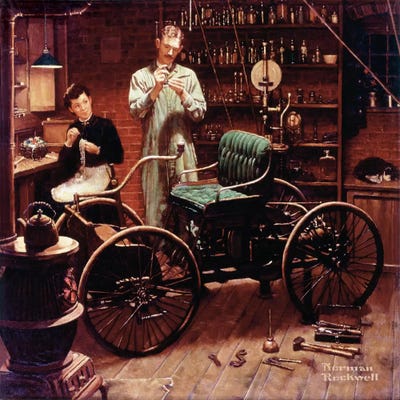Ironically, the man who grew up in rural America, and longed for the America of his youth, would do more to expand urban America than any other inventor.
In 1896, in a Detroit shed, a young man toiled on his invention. It would not be his first. At the tender age of 13, his father had given him a pocket watch for his birthday. He promptly took it apart and put it back together again. At 16, he left the family farm near Dearborn, Michigan to apprentice as a machinist in Detroit. On that night in 1896, he tinkered with a new invention: a horseless carriage, powered by gasoline. (http://www.biography.com/people/henry-ford-9298747)
Not long after, Henry Ford started his first automobile company, but he soon went bankrupt. In 1903, he started his third company, and this time, he succeeded. The revolution in the shed that night did not end there. A second revolution came when Henry Ford made the automobile available for the masses with his invention of the assembly line. (http://alinefromlinda.blogspot.ca/2012/01/cars-in-driveways-chickens-in-pots.html) Ironically, the man who grew up in rural America, and longed for the America of his youth, would do more to expand urban America than any other inventor.
Norman Rockwell painted The Revolution in the Shed at Night in 1953, as part of a series called "The American Road", celebrating the 50th anniversary of the Ford Motor Company.
Norman Rockwell painted The Revolution in the Shed at Night in 1953, as part of a series called "The American Road", celebrating the 50th anniversary of the Ford Motor Company.

No comments:
Post a Comment